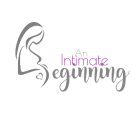Learning Objectives
1. Create a shared decision-making model and provide client education.
2. Identify and explain components of the physiologic process of labor, and can demonstrate a sterile vaginal examination, hand maneuvers for a normal vertex delivery, and management of a nuchal cord.
3. Identify and describe the mechanisms of labor for anterior, posterior, transverse, face, brow, military, and breech presentations.
4. Identify and describe appropriate management of common complications and interventions of labor and the immediate postpartum period.
5. Apply the principles of infection control, universal precautions, and legal reporting requirements.
6. Identify indications for and develop appropriate plans for intrapartum, immediate postpartum, and neonatal transport.
7. Explain expectant management of the third stage.
8. Identify and describe indications and procedures for active management of the third stage.
9. Identify and verbalize components of immediate postpartum care for the birthing person, including assessing vital signs and blood loss.
10. Identify and verbalize and identifies components of immediate postpartum care for the neonate, including APGAR assessment, assessing vitals for the IPP period, initiating breastfeeding, and monitoring temperature and blood sugar regulation.
11. Demonstrate conducting a basic newborn examination and gestational age assessment.
12. Demonstrate promotion of the “golden hour” as a mechanism to promote bonding
13. Provide evidence-based client education for the postpartum period, including demonstrating the provision of postpartum instructions and facilitation of cutting the umbilical cord.
14. Explain the importance of interprofessional collaboration.
